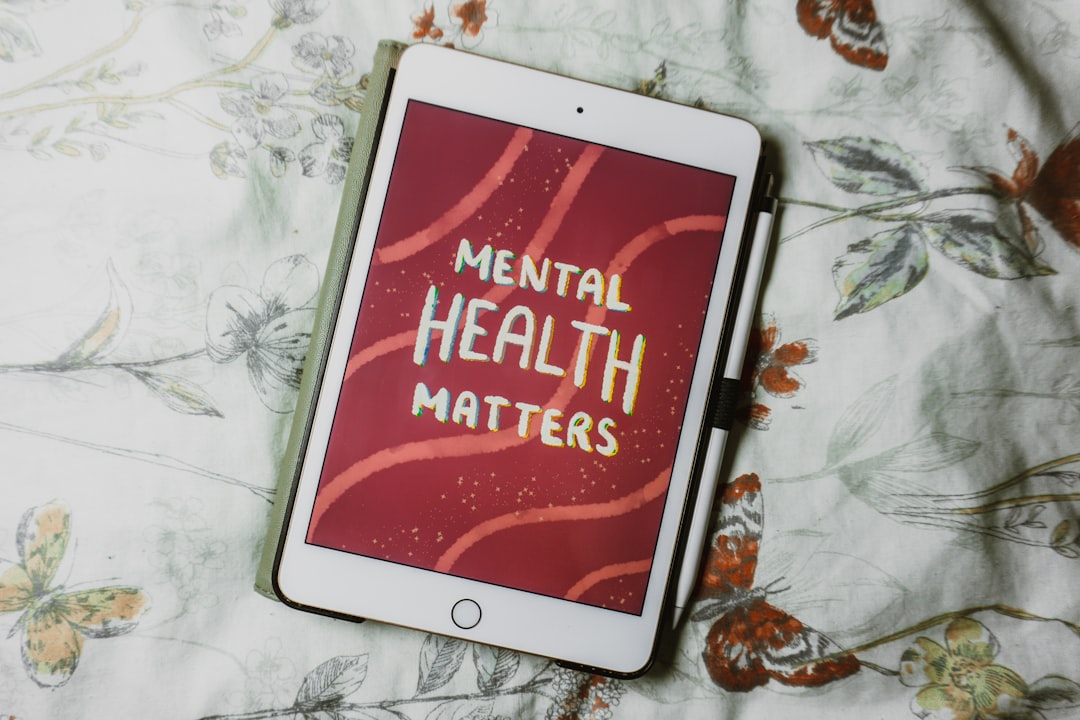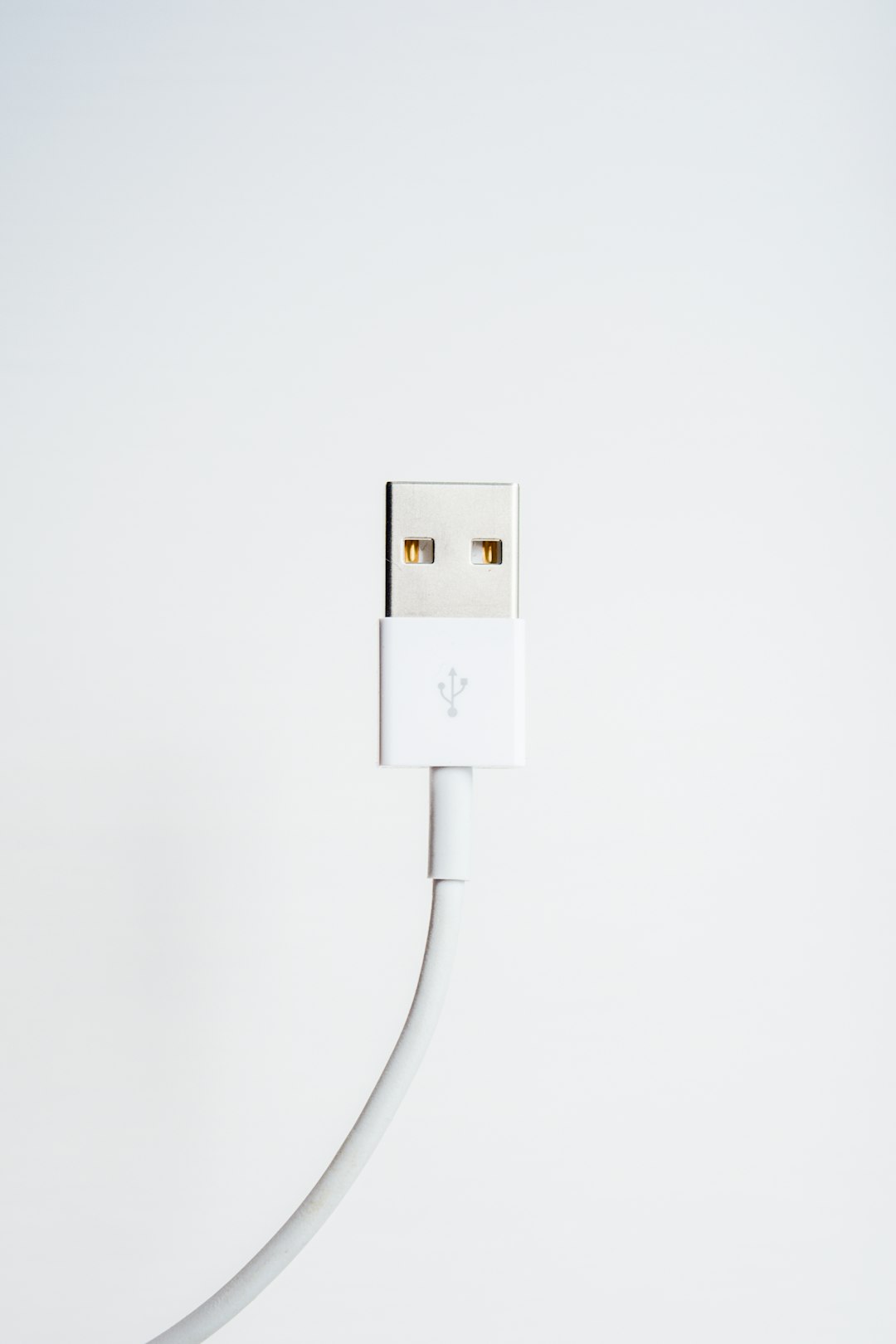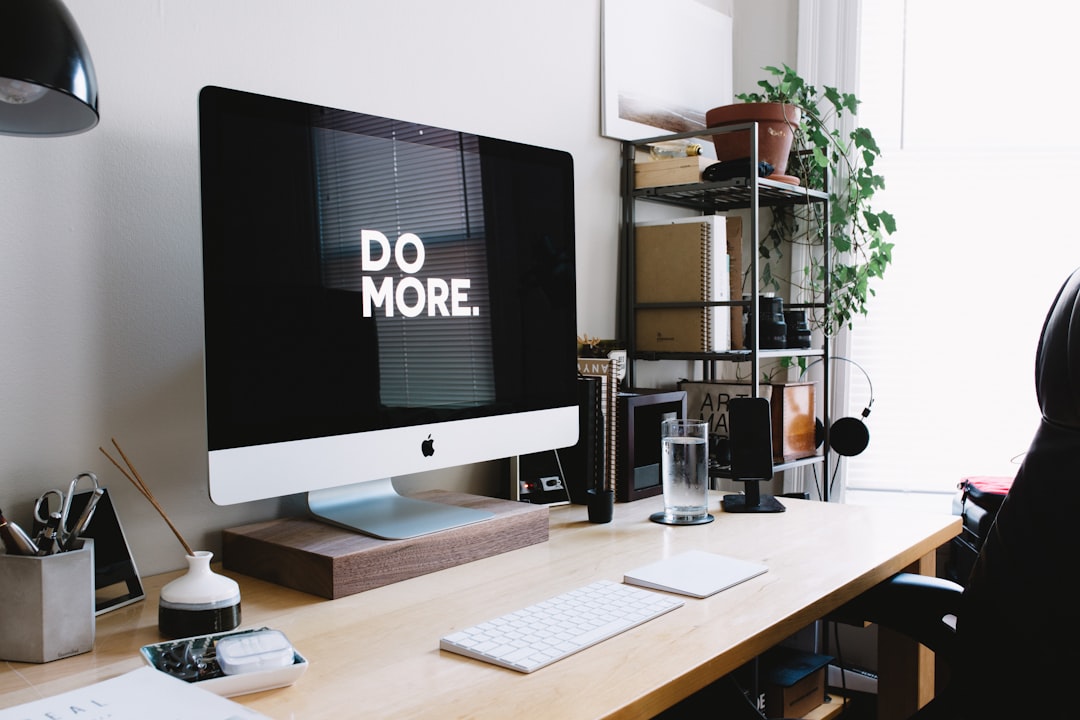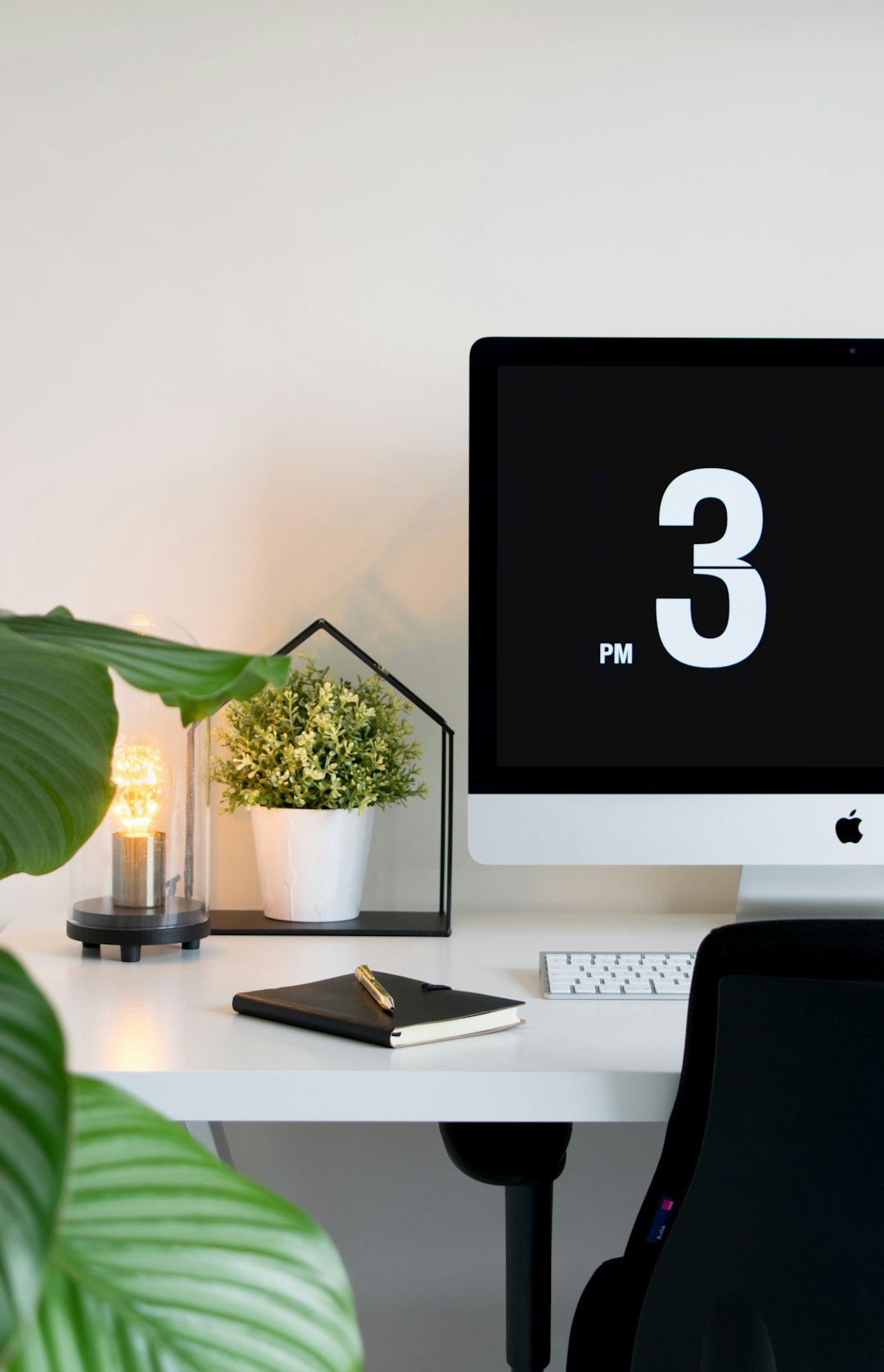Embracing a digital detox journey
In today's digital age, it's easy to feel overwhelmed and consumed by technology. Our constant connection to screens can lead to stress, anxiety, and a sense of disconnection from the real world. But what if we could reset our relationship with technology and find a healthier balance? The path to a digital detox and balancing screen time may seem daunting, but it is also filled with optimism and the opportunity for personal growth. By making conscious choices and embracing a mindful approach, we can reclaim our time, focus, and well-being. Join us on this optimistic journey as we explore the steps and strategies to reset your relationship with technology.

https://unsplash.com/@emilyunderworld
The power of resetting your relationship with technology
The power of resetting your relationship with technology cannot be overstated. In today's fast-paced digital world, it is all too easy to become consumed by screens and devices. Our constant connection to technology can have negative effects on our mental and physical well-being, leading to increased stress, anxiety, and a sense of disconnection from the real world.
However, by embracing a digital detox and finding a healthier balance, we have the power to transform our relationship with technology. Resetting our relationship with technology is about taking back control and consciously choosing how we engage with screens and devices.
One of the most significant benefits of resetting our relationship with technology is the opportunity for personal growth. By reducing screen time and being more mindful of our device usage, we create space for other activities and experiences that contribute to our overall well-being. We can rediscover the joy of spending quality time with loved ones, engaging in hobbies and interests, and reconnecting with the natural world.
Resetting our relationship with technology also allows us to reclaim our time and focus. By setting boundaries and implementing screen-free zones or designated device-free times, we can prioritize our own needs and goals without constant distractions. This increased focus and productivity can ultimately lead to greater fulfillment and success in various aspects of our lives.
Furthermore, resetting our relationship with technology empowers us to create healthier habits and routines. By being more intentional about our device usage, we can establish a better work-life balance, improve our sleep patterns, and reduce feelings of overwhelm and burnout. We can develop a healthier relationship with technology that enhances our overall well-being rather than detracting from it.
In conclusion, the power of resetting our relationship with technology lies in the positive impact it can have on our mental, physical, and emotional well-being. By embracing a digital detox and finding a healthier balance, we have the opportunity to experience personal growth, reclaim our time and focus, and create healthier habits and routines. Join us on this optimistic journey as we explore the steps and strategies to reset your relationship with technology and discover the true potential of a harmonious coexistence with screens and devices.
Balancing screen time: finding harmony in the digital age
In today's digital age, finding a balance with screen time has become increasingly important. With constant access to technology, it can be easy to get consumed and spend excessive hours scrolling through social media, watching videos, or playing games. However, finding harmony with screen time is crucial for our overall well-being. Here are some strategies to help you achieve a healthy balance:
1. Set boundaries: Establish clear boundaries around your screen time. Determine specific hours during the day when you will engage with screens and when you will take a break. For example, you can designate certain hours in the evening as "screen-free time" or implement a rule of no screens during meals. Stick to these boundaries and make them a consistent part of your routine.
2. Prioritize offline activities: Instead of spending all your free time on screens, make an effort to engage in offline activities that bring you joy and fulfillment. This can include hobbies, exercise, spending time in nature, reading a book, or connecting with loved ones face-to-face. By prioritizing these activities, you can reduce your reliance on screens and find greater balance in your life.
3. Practice mindful screen usage: Be aware of how and why you engage with screens. Are you using screens out of habit, boredom, or as a means of escape? Practice mindfulness and ask yourself if the time spent on screens aligns with your values and goals. Use screens intentionally and purposefully, rather than mindlessly scrolling or getting lost in a digital rabbit hole.
4. Implement screen-free zones: Designate specific areas or times in your home where screens are not allowed. This can include bedrooms or certain parts of the house where you want to create a technology-free environment. By creating these screen-free zones, you can establish boundaries and promote a healthier relationship with screens.
5. Use screen time management tools: Take advantage of the various screen time management tools available. Many devices and apps offer features that track and limit your screen time. Set usage limits or enable notifications that remind you to take breaks. These tools can help you become more mindful of your screen usage and support you in finding a balance.
Finding harmony with screen time in the digital age is essential for our mental, physical, and emotional well-being. By setting boundaries, prioritizing offline activities, practicing mindfulness, implementing screen-free zones, and utilizing screen time management tools, you can achieve a healthier balance and enjoy the benefits of a harmonious coexistence with screens and devices. Stay tuned as we explore more strategies to reset your relationship with technology and find long-lasting harmony in the digital world.

https://unsplash.com/@fempreneurstyledstock
Discovering the joy of offline activities
In today's digital age, it can be easy to get consumed and spend excessive hours on screens. However, finding a healthy balance between screen time and offline activities is crucial for our overall well-being. By prioritizing offline activities, we can rediscover the joy of living in the present moment and engage in activities that bring us fulfillment. Here are some strategies to help you discover the joy of offline activities:
1. Explore new hobbies: Take this opportunity to explore new activities and hobbies that you've always wanted to try. Whether it's painting, playing a musical instrument, gardening, or hiking, engaging in these offline activities can help you tap into your creativity and bring a sense of joy and fulfillment.
2. Connect with loved ones: Spending quality time with family and friends is a great way to disconnect from technology and focus on meaningful relationships. Plan outings, game nights, or simply have a heartfelt conversation over a cup of coffee. Building strong connections with loved ones can bring immense joy and create lasting memories.
3. Engage in physical exercise: Physical exercise not only benefits our physical health but also contributes to our mental well-being. Whether it's going for a run, practicing yoga, or taking a dance class, engaging in regular physical exercise releases endorphins that boost mood and promote a sense of joy and accomplishment.
4. Immerse yourself in nature: Spending time in nature has a calming effect on our minds and bodies. Take a walk in the park, go hiking, or plan a camping trip. Immersing yourself in the beauty of nature can help you disconnect from the digital world and appreciate the wonders of the natural world around you.
5. Read a book: Reading is a wonderful offline activity that allows you to escape into different worlds and expand your knowledge. Whether it's fiction or non-fiction, getting lost in a good book can provide a sense of joy, relaxation, and intellectual stimulation.
6. Practice mindfulness and self-reflection: Take time to engage in mindfulness exercises such as meditation or journaling. These activities can help you disconnect from the digital noise and connect with your inner self. Cultivating mindfulness and self-reflection can lead to a greater sense of joy, peace, and overall well-being.
By discovering the joy of offline activities, we can find a healthier balance between our digital lives and the real world. Engaging in hobbies, connecting with loved ones, exercising, spending time in nature, reading, and practicing mindfulness can all contribute to a more fulfilling and joyful life. Stay tuned as we continue to explore strategies for resetting your relationship with technology and finding harmony in the digital world.

https://unsplash.com/@abrkett
Nurturing meaningful connections in the real world
In today's technologically advanced world, it can be easy to get caught up in the digital sphere and neglect the importance of meaningful connections in the real world. However, nurturing and strengthening these connections is vital for our overall well-being and happiness. Here are some strategies to help you nurture meaningful connections in the real world:
1. Prioritize face-to-face interactions: While technology allows us to stay connected with others through social media and messaging apps, nothing can replace the depth and authenticity of face-to-face interactions. Make it a priority to spend quality time with loved ones and friends, engaging in meaningful conversations and creating lasting memories.
2. Active listening: One of the keys to nurturing meaningful connections is practicing active listening. When engaging in conversations, give your full attention to the person speaking and try to understand their perspectives and emotions. This not only shows that you value their thoughts and feelings but also strengthens the bond between you.
3. Empathy and compassion: Cultivating empathy and compassion is essential for nurturing meaningful connections. Put yourself in the shoes of others, try to understand their experiences, and show genuine care and concern. Small acts of kindness can go a long way in strengthening relationships and fostering a sense of connection.
4. Shared experiences: Engaging in shared experiences is a powerful way to nurture meaningful connections. Plan activities or outings with loved ones or join local communities and groups that align with your interests and passions. By partaking in activities together, you build memories and create a sense of belonging and camaraderie.
5. Quality time: In our busy lives, it's easy to get caught up in the hustle and bustle, leaving little time for meaningful connections. However, it's important to prioritize quality time with loved ones. Set aside dedicated time for loved ones without any distractions, such as phones or other devices. This will allow for deeper connections and conversations.
6. Celebrate milestones and accomplishments: Nurturing meaningful connections also involves celebrating the milestones and accomplishments of those around you. Take the time to acknowledge and congratulate loved ones on their successes, whether big or small. This shows that you are actively engaged and invested in their happiness.
7. Be present: Finally, being present is crucial for nurturing meaningful connections. Put aside distractions and be fully present when spending time with others. Show genuine interest and engage actively in conversations. Being present allows for deeper connections and meaningful interactions.
By nurturing meaningful connections in the real world, we can experience a greater sense of fulfillment, happiness, and overall well-being. Stay tuned as we continue to explore strategies for resetting your relationship with technology and finding harmony in the digital world.

https://unsplash.com/@hugobarbosa
Cultivating mindfulness and self-care in the digital era
In the fast-paced digital era, cultivating mindfulness and practicing self-care are essential for maintaining a healthy relationship with technology. Here are some strategies to help you find balance and reconnect with yourself in the midst of constant technological stimulation:
1. Set boundaries: Establish clear boundaries between your digital and offline life. Create designated "technology-free" periods during the day, such as the first hour after waking up or the last hour before bed. Use this time to engage in activities that promote mindfulness, such as meditation, journaling, or simply enjoying a quiet moment of reflection.
2. Practice digital detox: Consider taking regular breaks from technology by engaging in a digital detox. This can range from a few hours to several days, depending on your individual needs. During this time, refrain from using electronic devices and focus on activities that nourish your mind, body, and soul, such as spending time in nature, practicing yoga, or reading a book.
3. Mindful technology use: When you do use technology, practice mindfulness. Be intentional about how you engage with digital platforms and apps. Set limits on your usage, avoid mindlessly scrolling through social media feeds, and pay attention to how certain digital content and interactions make you feel. Being mindful of your technology use allows you to prioritize activities that truly add value to your life and align with your personal values.
4. Establish self-care routines: Prioritize self-care activities that promote your overall well-being. This can include activities such as exercising, eating nutritious meals, getting enough sleep, and engaging in hobbies that bring you joy and relaxation. Self-care not only helps you recharge and rejuvenate but also enhances your ability to navigate the digital world in a healthy and balanced way.
5. Engage in mindfulness practices: Incorporate mindfulness practices into your daily routine to cultivate present-moment awareness and reduce stress. This can include activities such as mindfulness meditation, deep breathing exercises, or mindful walking. By bringing your attention to the present moment, you can develop a greater sense of clarity, focus, and resilience in the face of digital distractions.
6. Create a digital-free environment: Designate certain areas in your home or workplace as technology-free zones. This could be your bedroom, dining area, or any space where you want to foster relaxation, connection, and uninterrupted face-to-face interactions. By creating a digital-free environment, you create a physical reminder to prioritize presence and human connection over constant digital engagement.
Remember, cultivating mindfulness and practicing self-care is a continuous journey. The goal is not to completely disconnect from technology but rather to find a healthy balance that allows you to reap the benefits of the digital world while also nurturing your well-being. By incorporating these strategies into your daily life, you can reset your relationship with technology and create a harmonious coexistence between the digital and offline realms. Stay tuned as we delve deeper into the path to digital detox and finding fulfillment in the digital age.
The optimistic path to long-lasting digital balance
The path to finding long-lasting digital balance is an optimistic one. It requires a mindset shift and a commitment to self-awareness. By embracing the following practices, you can reset your relationship with technology and create a healthier and more fulfilling digital life:
1. Embrace intentional technology use: Rather than mindlessly scrolling through social media or spending hours on digital platforms, make a conscious effort to use technology with purpose. Set specific goals for your technology usage and prioritize activities that align with your values and bring you genuine joy and fulfillment.
2. Prioritize meaningful connections: Technology can be a powerful tool for connecting with others, but it's important to focus on quality over quantity. Nurture genuine relationships and prioritize face-to-face interactions. Use technology to enhance and deepen your connections, rather than substituting them.
3. Practice digital moderation: Find a balance between the digital world and the offline world. Set limits on your screen time and create boundaries that allow you to engage in activities that nourish your mind, body, and soul. Remember that it's okay to take breaks from technology and prioritize self-care.
4. Foster mindfulness in the digital age: Cultivate mindfulness practices that help you stay present and aware of your technology usage. Incorporate meditation, deep breathing exercises, or mindful moments throughout your day to bring yourself back to the present moment and reduce stress.
5. Explore alternative activities: Look for activities that bring you joy and fulfillment outside of the digital realm. Engage in hobbies, physical exercise, creative pursuits, or spending time in nature. By diversifying your activities, you can find a sense of fulfillment that goes beyond the screen.
6. Create a supportive environment: Surround yourself with people who share your values and goals for maintaining a balanced digital life. Build a support system of friends, family, or like-minded individuals who can hold you accountable and provide encouragement on your digital detox journey.
7. Celebrate small wins: Recognize and celebrate your progress as you navigate the path to digital balance. It's not about achieving perfection, but rather making small, sustainable changes that lead to a healthier relationship with technology.
By following this optimistic path to long-lasting digital balance, you can reclaim control over your technology usage and find fulfillment in both the digital and offline realms. Stay committed, stay mindful, and embrace the positive changes that come with resetting your relationship with technology.

https://unsplash.com/@gilleslambert
Conclusion: Embracing a new mindset and embracing life beyond the screen
Conclusion: Embracing a new mindset and embracing life beyond the screen
In conclusion, finding balance in our relationship with technology is essential for our overall well-being and fulfillment. By embracing a new mindset and intentionally shaping our digital lives, we can create a healthier and more fulfilling existence beyond the screen.
To achieve this, we must prioritize meaningful connections and prioritize face-to-face interactions. By nurturing genuine relationships and using technology as a tool to enhance and deepen our connections, we can avoid the trap of substituting real-life interactions with digital ones.
Practicing digital moderation is key. Setting limits on our screen time and establishing boundaries that allow us to engage in activities that nourish our mind, body, and soul is essential for finding balance. Remember, it is okay to take breaks from technology and prioritize self-care. Creating a supportive environment is equally important. Surrounding ourselves with individuals who share similar values and goals for maintaining a balanced digital life can provide accountability and encouragement on our digital detox journey.
Fostering mindfulness is crucial in the digital age. Cultivating mindfulness practices such as meditation, deep breathing exercises, or mindful moments throughout the day helps us stay present and aware of our technology usage. By incorporating these practices, we can reduce stress and bring ourselves back to the present moment.
Exploring alternative activities outside the digital realm is also vital. Engaging in hobbies, physical exercise, creative pursuits, or spending time in nature diversifies our activities and brings us joy and fulfillment beyond the screen.
Lastly, celebrating small wins is important. Recognizing and celebrating our progress as we navigate the path to digital balance allows us to stay motivated and continue making sustainable changes. It is not about achieving perfection, but rather embracing the positive changes that come with resetting our relationship with technology.
By embracing this new mindset and taking proactive steps to balance our digital lives, we can reclaim control over our technology usage and find true fulfillment in both the digital world and the offline realm. Let us stay committed, remain mindful, and embrace the positive changes that come with resetting our relationship with technology.
The Digital Detox Solution: Balancing Screen Time for a Happier, Healthier Life
Embracing the Digital Detox Solution
In today's technology-driven world, it's easy to become consumed by screens and digital devices. From smartphones to laptops, we are constantly connected and bombarded with information. While technology has undoubtedly made our lives easier in many ways, it's important to recognize the negative effects it can have on our mental and physical well-being. That's where the concept of a digital detox comes in. By consciously and intentionally taking a break from screens, we can find a better balance and create a happier, healthier life. In this blog, we'll explore the benefits of a digital detox and provide practical tips for implementing it into your daily routine. Get ready to unplug and discover the power of a screen-free lifestyle!

https://unsplash.com/@carlheyerdahl
The Dangers of Excessive Screen Time
Excessive screen time has become a common issue in today's society, and it poses several dangers to our mental and physical well-being. Here are some of the key dangers associated with excessive screen time:
1. Negative impact on mental health: Spending excessive time on screens can contribute to feelings of anxiety, stress, and depression. Constant exposure to social media, online news, and virtual interactions can lead to information overload and a constant need for validation, which can negatively impact mental health.
2. Disrupted sleep patterns: The blue light emitted by screens can interfere with the production of melatonin, a hormone that regulates sleep. This can lead to difficulties falling asleep and getting a good night's rest. Poor sleep quality can have wide-ranging effects on cognitive function, mood, and overall well-being.
3. Sedentary lifestyle: Excessive screen time often leads to a sedentary lifestyle, as it encourages a lack of physical activity. Spending prolonged periods sitting or lying down while engaging with screens can increase the risk of conditions like obesity, heart disease, and diabetes. It is important to incorporate regular physical activity into our daily routines to counteract the sedentary effects of screen time.
4. Impaired social skills and relationships: The digital world can sometimes replace real-life interactions, leading to a decline in social skills and the ability to form meaningful connections. Excessive screen time can limit face-to-face communication, empathy, and emotional intelligence, which are crucial for building and maintaining healthy relationships.
5. Decreased productivity and focus: Constant distractions from screens can significantly impair productivity and focus. The continuous influx of notifications, emails, and social media updates can make it difficult to concentrate on tasks. This can result in decreased work or study performance and increased levels of stress.
Limiting screen time and implementing a digital detox can help mitigate these dangers and promote a healthier lifestyle. By consciously taking breaks from screens and engaging in activities such as reading, exercising, and spending time outdoors, we can find a better balance and improve our overall well-being.

https://unsplash.com/@kobuagency
Balancing Screen Time for a Healthier Lifestyle
Balancing Screen Time for a Healthier Lifestyle
Finding a balance in screen time is crucial for maintaining a healthy and fulfilling life. The constant use of screens and technology can have detrimental effects on our physical and mental well-being. Here are three strategies to help you achieve a healthier screen time balance:
1. Set Boundaries and Prioritize Offline Activities
One of the first steps to balancing screen time is to set boundaries and establish designated times for using screens. Start by identifying the activities that are essential and cannot be done offline, such as work or important communication. Allocate specific time slots for these activities and stick to them.
Outside of these essential tasks, make a conscious effort to engage in offline activities that bring joy and fulfillment. This could include reading a book, pursuing a hobby, connecting with loved ones face-to-face, or spending time in nature. By prioritizing these offline activities, you can reduce your dependence on screens and cultivate a healthier lifestyle.
2. Practice Mindful Screen Usage
Mindful screen usage involves being aware of how and why you are using screens. Instead of mindlessly scrolling through social media or binge-watching television shows, practice intentional and purposeful screen usage. Before picking up your phone or turning on the television, ask yourself if there is a specific reason or goal behind your screen time.
Setting specific intentions and time limits for each screen session can help prevent excessive usage. Use apps or features that track and limit your screen time, and consider implementing "screen-free zones" in your home, such as the bedroom or dining area, to promote healthy boundaries.
3. Engage in Physical and Mental Well-being Activities
Regular physical exercise and mental well-being activities are essential for maintaining a balanced and healthy lifestyle. Allocate time each day for physical exercise, whether it's going for a walk, practicing yoga, or engaging in a sport. Physical activity not only offers numerous health benefits but also provides a screen-free break and an opportunity to recharge.
In addition to physical exercise, prioritize activities that promote mental well-being, such as meditation, mindfulness practices, or journaling. These activities can help reduce stress, improve focus, and provide a much-needed break from screen-related stimuli.
By implementing these strategies and making conscious choices about your screen time, you can achieve a healthier balance between the digital world and the real world. Remember, finding this balance is crucial for your physical and mental well-being, allowing you to live a happier and more fulfilling life.

https://unsplash.com/@mydailydestinations
Disconnect to Reconnect: Tips for Digital Detoxing
Disconnect to Reconnect: Tips for Digital Detoxing
In today's digital age, where screens and technology are deeply integrated into our daily lives, taking a break from the constant digital stimulation and practicing a digital detox is essential for our well-being. Here are four tips to help you disconnect from the digital world and reconnect with yourself and the real world:
1. Set Clear Goals and Boundaries
Start by setting clear goals and boundaries for your digital detox. Determine the duration of your detox, whether it's a day, a weekend, or longer, and commit to sticking to it. Define what areas of your life you want to focus on during this time, whether it's spending quality time with loved ones, pursuing a hobby or interest, or simply taking care of your own well-being.
Communicate your intentions to those around you, including friends, family, and colleagues, so they can support and respect your digital detox. Setting these clear goals and boundaries will help you stay committed and focused during your time away from screens.
2. Create a Tech-Free Zone or Time
Designate specific areas or times in your daily routine as tech-free zones or times. This could be your bedroom, dining area, or a specific time period before bed. By creating these tech-free zones or times, you give yourself the opportunity to disconnect and fully engage with the present moment.
Remove electronic devices from these areas or put them on silent mode to minimize distractions. Use this time to connect with loved ones, engage in activities that bring you joy, or simply enjoy some moments of peace and quiet.
3. Find Alternative Activities
During your digital detox, explore alternative activities that will help you engage with the real world and promote a sense of balance and well-being. This could include reading a book, going for a walk in nature, practicing mindfulness or meditation, pursuing a creative project, or spending quality time with loved ones.
Engaging in these activities will not only help you break the cycle of screen dependence but also provide you with new experiences and moments of joy that can enhance your overall well-being.
4. Practice Mindfulness and Self-Reflection
A digital detox also provides an excellent opportunity for mindfulness and self-reflection. Use this time to cultivate a greater sense of self-awareness and reflect on your relationship with technology.
Observe how your screen time habits impact your mental and emotional well-being. Notice any patterns or triggers that lead to excessive screen usage or feelings of disconnection. By practicing mindfulness and self-reflection, you can gain valuable insights and make intentional choices about your digital habits moving forward.
In conclusion, disconnecting from the digital world through a digital detox is an essential practice in our technology-driven era. By setting clear goals and boundaries, creating tech-free zones or times, finding alternative activities, and practicing mindfulness and self-reflection, you can successfully disconnect to reconnect with yourself, loved ones, and the real world. Embrace the benefits of a digital detox and prioritize your well-being in today's screen-saturated society.

https://unsplash.com/@jasongoodman_youxventures
Discovering the Joy of Real-Life Moments
Discovering the Joy of Real-Life Moments
In our increasingly digital world, it's easy to get caught up in the constant stimulation of screens and technology. However, taking the time to disconnect and practice a digital detox can lead to a happier, healthier life. By stepping away from the digital world, we can rediscover the joy of real-life moments and cultivate a greater sense of presence and fulfillment. Here are a few tips to help you embrace the joy of real-life moments during your digital detox:
1. Be Fully Present
During your digital detox, make a conscious effort to be fully present in the moment. Put away your phone, turn off notifications, and truly engage with your surroundings. Whether you're spending time with loved ones, enjoying a meal, or exploring nature, savor each experience and embrace the beauty of the present moment.
2. Engage in Meaningful Interactions
Take advantage of your time away from screens to engage in meaningful interactions with others. Connect with loved ones, have deep conversations, and truly listen to what they have to say. Engaging in genuine human connections can bring immense joy and fulfillment to your life.
3. Explore Your Passions
Use your digital detox as an opportunity to explore your passions and pursue activities that bring you joy. Whether it's painting, playing an instrument, practicing yoga, or trying out a new hobby, dedicate time to engage in activities that ignite your passion and fill you with a sense of purpose.
4. Immerse Yourself in Nature
Nature has a way of grounding us and reconnecting us with the beauty of the world around us. During your digital detox, spend time in nature, whether it's going for a hike, taking a walk on the beach, or simply sitting in a park. Allow yourself to be fully present in nature, taking in the sights, sounds, and scents. This can bring a sense of peace and rejuvenation to your mind, body, and soul.
5. Practice Gratitude
A digital detox is the perfect time to practice gratitude and appreciate the blessings in your life. Take a moment each day to reflect on the things you are grateful for, whether it's the love of your family, the beauty of nature, or the simple pleasures in life. Cultivating a mindset of gratitude can shift your focus to the positive aspects of life and bring greater joy and contentment.
By discovering the joy of real-life moments, you can find a greater sense of fulfillment, connection, and happiness in your day-to-day life. Embrace the opportunities that come with a digital detox and prioritize the moments that truly matter.
https://unsplash.com/@hautier
Making Time for Self-Care and Personal Growth
Making Time for Self-Care and Personal Growth
While our digital devices have revolutionized the way we communicate and access information, they have also brought about a constant state of distraction and busyness in our lives. This continual connectivity can often leave us feeling overwhelmed and drained, making it more important than ever to make time for self-care and personal growth. Taking a break from our screens and prioritizing our well-being can lead to improved mental, emotional, and physical health. Here are some tips for making time for self-care and personal growth during your digital detox:
1. Prioritize Self-Care Activities
During your digital detox, set aside dedicated time for self-care activities that nourish your mind, body, and soul. This can include activities such as exercise, meditation, journaling, reading, or engaging in hobbies that bring you joy. By prioritizing self-care, you are giving yourself the opportunity to recharge and rejuvenate.
2. Unplug and Disconnect
In order to fully engage in self-care and personal growth, it is essential to unplug and disconnect from your digital devices. Set specific boundaries for yourself, such as designating screen-free times or implementing a daily digital detox routine. By disconnecting from technology, you are creating space for introspection, self-reflection, and personal growth.
3. Set Goals and Intentions
Use your digital detox as a time to set goals and intentions for your personal growth. Reflect on areas of your life that you would like to improve or explore, and set realistic goals to work towards. Whether it is learning a new skill, setting boundaries in relationships, or prioritizing self-care, setting goals and intentions provides direction and purpose.
4. Practice Mindfulness and Self-Reflection
During your digital detox, practice mindfulness and self-reflection to gain clarity and insight into your thoughts, feelings, and actions. Take time to tune in to your emotions and thoughts, and explore any patterns or habits that may be hindering your personal growth. Mindfulness and self-reflection can help cultivate self-awareness and lead to positive changes in your life.
5. Seek Support and Guidance
Engaging in self-care and personal growth can sometimes feel challenging, especially when navigating it alone. Seek support and guidance from trusted friends, family members, or professionals who can provide encouragement, accountability, and valuable insights. Consider joining a support group, enlisting the help of a life coach, or attending workshops or retreats focused on personal growth.
Making time for self-care and personal growth is essential for maintaining overall well-being and leading a fulfilling life. By prioritizing yourself and disconnecting from the digital world, you create space for personal reflection, growth, and rejuvenation. Embrace the opportunities that come with a digital detox and nurture your mind, body, and soul.

https://unsplash.com/@jontyson
Finding the Perfect Screen-Time Balance
Finding the Perfect Screen-Time Balance
In today's digital age, it can be challenging to find the right balance between our screen time and other aspects of our lives. While technology has brought many conveniences and opportunities, excessive screen time can have negative effects on our mental, emotional, and physical well-being. Finding the perfect screen-time balance is crucial for a happier, healthier life. Here are some tips to help you achieve that balance:
1. Assess Your Current Screen-Time Habits
The first step in finding the perfect screen-time balance is to assess your current habits. Take a moment to reflect on how much time you spend in front of screens each day. This includes time spent on your smartphone, tablet, computer, television, and gaming devices. Be honest with yourself and identify any areas where you may be spending excessive time on screens.
2. Set Realistic Limits
Once you have a clear understanding of your current screen-time habits, set realistic limits for yourself. Determine the maximum amount of time you are comfortable spending on screens each day. This could mean allocating specific hours or defining specific activities where screen time is allowed. Setting limits will help you prioritize other activities and create boundaries between technology and the rest of your life.
3. Create Tech-Free Zones and Times
To further support your screen-time balance, create tech-free zones and times in your daily routine. Designate certain areas in your home, such as the bedroom or dining area, as screen-free zones. This will help you disconnect from devices and focus on other activities, such as spending quality time with family or practicing self-care. Similarly, establish specific times throughout the day where you commit to being screen-free, such as during meals or before bedtime.
4. Find Alternative Activities
One of the keys to finding the perfect screen-time balance is to find alternative activities that you enjoy. Identify hobbies, interests, or physical activities that can replace excessive screen time. This could include reading a book, engaging in outdoor activities, practicing mindfulness or meditation, or pursuing creative endeavors. By finding fulfilling alternatives, you can reduce your reliance on screens and diversify your experiences.
5. Practice Mindful Screen Time
While reducing screen time is important, it's also crucial to practice mindful screen time when you do engage with technology. Be intentional about the content you consume and the purpose behind your screen use. Avoid mindless scrolling or excessive use of social media. Set specific goals or intentions for your screen time, such as learning a new skill, staying connected with loved ones, or seeking inspiration. By being mindful of your screen use, you can make it a more purposeful and meaningful part of your life.
Finding the perfect screen-time balance requires conscious effort and self-awareness. By assessing your current habits, setting limits, creating tech-free zones and times, finding alternative activities, and practicing mindful screen time, you can achieve a healthier relationship with technology and prioritize other aspects of your life. Striking the right balance will contribute to your overall well-being and lead to a happier, more fulfilling life.

https://unsplash.com/@goumbik
Embracing a Happier, Healthier Life in the Digital Age
Embracing a Happier, Healthier Life in the Digital Age
Living in the digital age has its benefits, but it also comes with challenges. Excessive screen time can take a toll on our mental, emotional, and physical well-being. However, by making conscious choices and adopting healthy habits, we can embrace a happier and healthier life in the digital age. Here are some strategies to help you achieve that:
1. Practice Digital Detox
Taking regular breaks from technology is essential for maintaining a healthy balance. Consider implementing a digital detox, where you disconnect from all screens for a certain period of time. This could be a few hours, a day, or even a weekend. During this time, engage in activities that nourish your mind, body, and soul. Read a book, go for a walk, spend time with loved ones, or pursue a hobby. By stepping away from screens, you give yourself the opportunity to recharge and reconnect with the offline world.
2. Set Boundaries
Setting boundaries is key to managing screen time effectively. Establish specific rules for yourself and your family members regarding when and how screens can be used. For example, you could designate certain hours of the day as "screen-free time" or implement a "no screens at the dining table" rule. By setting boundaries, you create a healthy separation between technology and other aspects of your life. This allows you to be fully present in activities and relationships without the constant distraction of screens.
3. Prioritize Self-Care
In the digital age, it's easy to neglect self-care in favor of constant screen usage. However, taking care of your physical, mental, and emotional well-being is crucial for overall happiness and health. Make self-care a priority in your daily routine. This could include practicing mindfulness or meditation, engaging in regular exercise, getting enough sleep, and nourishing your body with nutritious food. By prioritizing self-care, you strengthen your resilience to the stresses of digital life and promote a healthier lifestyle.
4. Cultivate Offline Connections
While technology enables us to connect with others virtually, it's important to cultivate offline connections as well. Make an effort to spend quality time with loved ones in person. Plan activities together, have face-to-face conversations, and create memorable experiences. Building strong offline relationships helps foster a sense of belonging and fulfillment that can't be fully achieved through screens. By nurturing these connections, you create a support system that contributes to your overall well-being.
5. Practice Mindfulness
Mindfulness is a powerful tool for navigating the digital age with intention and awareness. Be mindful of your screen usage and its impact on your well-being. Pay attention to how you feel when you're using technology and whether it aligns with your values and goals. Practice being present in the moment, without the constant need for distraction. Engage with screens consciously, choosing content that adds value to your life and avoiding mindless scrolling. By practicing mindfulness, you cultivate a healthier relationship with technology and experience greater satisfaction in your daily life.
Embracing a happier, healthier life in the digital age is possible with conscious effort and deliberate choices. By practicing digital detox, setting boundaries, prioritizing self-care, cultivating offline connections, and practicing mindfulness, you can create a balanced lifestyle that allows you to thrive both online and offline. Remember, technology should serve as a tool to enhance your life, not control it. Strive for a harmonious relationship with screens, and enjoy the benefits of living in the digital age while prioritizing your well-being.
